I know that I’ve brought it up (many times) in the past, but I absolutely love the fact that when Ms. Takeuchi settles on a theme, she tends to stick with it. And stick with it she did in terms of having a unifying naming pattern — gems, minerals, elements, and metals — for nearly all of the primary villains in the Sailor Moon series.
Today we’re going to take a look at some of Sailor Galaxia’s minions, the Sailor Animamates, and see where their names came from. Though some of these are probably obvious on the surface, there are actually a few surprises worth sticking around for!
Grab some shovels and hardhats, kids. We’re digging deep!
For those of you out there wondering why I didn’t just dedicate this article to the Shadow Galaxtica, it’s because not every character we see serving under Galaxia is actually an Animamate.
The most obvious examples of this are the Sailor Gardeners, Sailors Chi and Phi, and the Sailor sisters of the River Styx, Lethe and Mnemosyne. But if you want to get really pedantic,1 technically Sailor Uranus and Sailor Neptune were also members of the Shadow Galactica in the anime, and nearly all of the Sailor Soldiers wound up being brought over to the evil organization in the manga.
Which is a very roundabout way of saying that “the Sailor Animamates are just a subset of the Shadow Galactica.” Think on the same level as the Witches 5 being a subset of the Death Busters.
So with that out of the way, let’s take a look at what these characters’ names all mean!
Sailor Animamates
Speaking of the Sailor Animamates, where better to start than the name of the group itself! Unfortunately, I wasn’t able to find any concrete information on this subject, so I doubt there’s actually an answer out there to find, but I have two possible explanations:
- Anima is short for animal
- Anima is in reference to the Latin word anima, meaning “a current of air, wind, air, breath, the vital principle, life, soul”2
The first one is nice and simple, especially when you consider that the names of all of the Sailor Animamates follow the same pattern of [mineral] [animal].
… but I don’t think it’s the right answer. The Amazon Trio were animals in the manga with nary a mention of it, and it doesn’t seem like the type of name Ms. Takeuchi would use. It seems more like the type of name puns you could expect from the anime monsters of the day.
That leaves us the other answer, that they are literally supposed to be anima mates, or life-spirit mates. You could even take this further and tie it into the theory of anima and animus,3 put forth by the father of analytical psychology, Carl Jung.4 But I think that’s going a bit far.
Personally, I’d be inclined to go with the Latin anima angle, especially when you consider that in the manga all of the Sailor Animamates had lost their bodies and were only able to continue on living by taking on the Sailor Crystal of the true Sailor Soldier of their respective planets after being granted power by Sailor Galaxia. I admittedly have very little to go on here, though. It could be neither. It could be both. But it’s interesting all the same.
But enough of that — on to the names!
Sailor Iron Mouse
Probably not much of a surprise here, but the iron here in her name comes from the metal of the same name. Pumping iron, iron mask, iron clothes. You know, iron. Oh, and she’s mouse-inspired.
In the anime, she works under the alias of Chuuko Nezu (根津宙子), with chuu coming from the noise mice make (Pikachu, anyone?), ko being a common suffix to female names, and nezu being in reference to nezumi (ネズミ),5 the Japanese word for mouse.
Sailor Lead Crow
Lead, kinda like the metal that you’re hoping wasn’t used in the paint that covers your house. Crow, like the bird. I promise this will get more interesting soon, please hang in there.
Going under the alias of Akane Karasuma (烏丸あかね) in the anime, her last name is in reference to karasu (烏),6 the Japanese word for crow. Though Akane isn’t written in kanji, it could be in reference to a type of red (known as Japanese madder) which is also read as akane (茜).7 This also ties nicely into a clever wordplay of レッド (reddo) being possible to read as either the metal “lead” or color “red.”
Sailor Aluminum Seiren
I always found her name to be a bit odd because, while the rest of the Sailor Animamates were named after normal animals, Sailor Aluminum Seiren here is named after the creature of Greek mythology, the siren.8 Often depicted with bird bodies and female heads, it works well enough… but I still think it deviates from the theme.
Oh, and aluminum. Like the thousands of cans I used to drink Mountain Dew out of.9
In the anime, she also works under the name Reiko Aya (彩れい子), which… well, no matter what way I look at it, I just can’t find any sort of connect or word play. I’m sure there must be some kind of pun here, but it’s lost on me.
Sailor Tin Nyanko
While the Tin part of her name is once again obvious, referring to the metal of the same name, Nyanko is a combination of the Japanese sound a cat makes, nyan, with the ko suffix common in female names. It also comes up not-uncommonly as a word used by little kids to refer to cats (nyanko) or dogs (wanko). Kinda like saying “See the woof-woof over there?” to a two year old.
When walking around brazenly as a leather-clad Sailor Soldier of purrfection, she goes by the alias Nyako Suzu (鈴にゃん子), with suzu (鈴) being the Japanese word for bell10 — like the type often found on a cat’s collar — and nyanko being the nyanko we just discussed. Incidentally, the Japanese word for tin can also be read as suzu (錫).
Sailor Heavy Metal Papillon
The last of the Sailor Animamates, this manga-only character is named after a category of metals known as “heavy metals” which, depending on your discipline, could mean a metal that has a high density, atomic weight, or atomic number.11 Papillon, on the other hand, is the French word for butterfly,12 which explains her character design.
And it looks like this is where we’re going to have to leave off for today. Next time around, we’ll be looking at the rest of the members of the Shadow Galactica and the interesting stories behind their names!
As for the Sailor Animamates group itself, what do you think about the etymology behind the name? I like the simplicity of the “animal” connection, but it doesn’t work for Seiren — not exactly an “animal” — and it seems too simple. On the other hand, the Latin “anima” angle could be reading too much into it. Or maybe not enough, if you want to go with Carl Jung. But who cares what I think — I’d like to hear from you!
References:
- Which I usually do ↩
- See Anima (Etymology) (Wikipedia) ↩
- See Anima and Animus (Wikipedia) ↩
- See Carl Jung (Wikipedia) ↩
- See ネズミ (Jisho.org) ↩
- See 烏 (Jisho.org) ↩
- See 茜 (Jisho.org) ↩
- See Siren (Mythology) (Wikipedia) ↩
- Listen, we all did things in our youth that we now regret… ↩
- See 鈴 (Jisho.org) ↩
- See Heavy Metals (Wikipedia) ↩
- See Papillon ↩

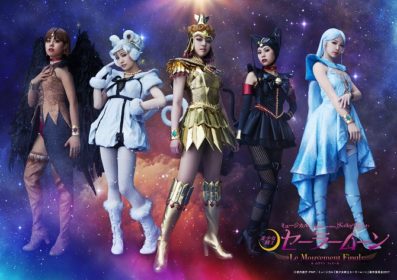
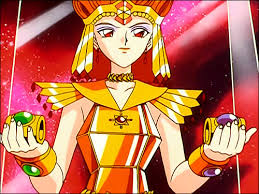
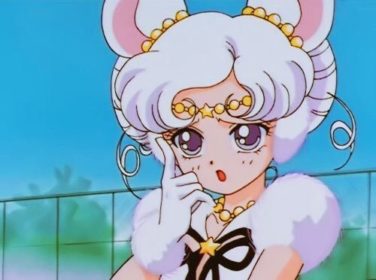
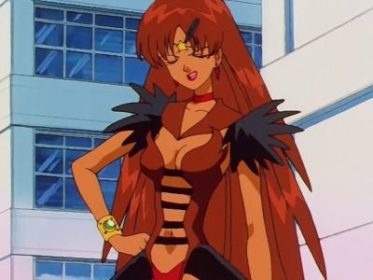
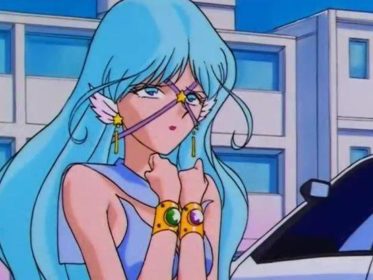
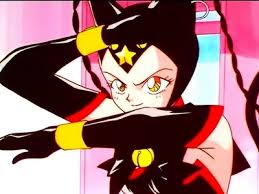
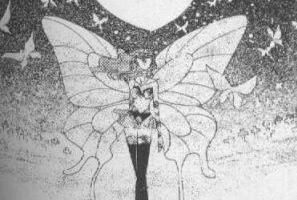
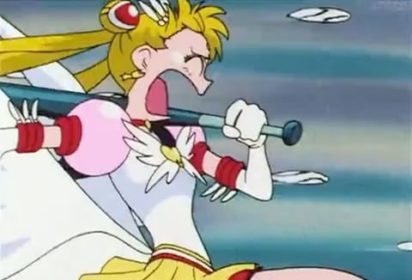

I’ve never liked the Sailor Animamates names. I remember in high school, a friend of mine got to the Stars season of the animé before I’d seen it, and when he started talking to me about Sailor Iron Mouse and Sailor Lead Crow, I thought he was making some kind of joke. Their names just feel so tonally different from all the primary villains that came before them.
I’ve also never understood why they aren’t named after planets or some other celestial bodies like the Sailor Senshi are; but I’ve only read through the final manga arc once (and I still haven’t seen Stars all the way through— I was trying to watch through the whole series in full, ended up taking a break after R, and am just now getting into SuperS), so maybe the explanation just went over my head.
In the manga arc, they’re actually not real sailor soldiers, but civillian who betrayed the sailors who protected their planets. the real sailor soldiers who guard their home planets were named accordingly to their planets, such as:
sailor chuu, sailor mu, sailor mermaid, and sailor coronis
Hmm…. I always figured anima meant animal…. But you are right about it not fitting with Seiren.
What I always wondered was how did Naoko choose which animal name (for lack of a better word here) and metal to put together. Like, why “iron” and “mouse” together. Or why put “lead” and “crow” together??
My theory for at least three of them:
Lead Crow: The symbolic I found is that the lead metal is often associated with death because of its toxicity, and in many cultures, crows are also associated with death. Fun anecdote that is more of a coincidence, lead is the metal associated with Saturn, and in Sailor Moon, Sailor Saturn is the Senshi of death and rebirth.
Iron Mouse: Iron Mouse’s name is also related to a color, although not a pun like Crow. It’s because iron is often associated to the color grey, and in Japan, there is no word for the color grey specifically. One of the term they use for the color grey is “nezumiiro” (鼠色), which translate to “rat/mouse color”. Nezumi is the Japanese term for both rat and mouse, and thus, mouse is strongly associated with the color grey in Japan, just like iron in general, thus connecting “Iron” and “Mouse” by the color grey.
Tin Nyanko: Suzu means bell in Japanese (鈴) and is written as such in Nyanko’s alias. But written with a different kanji, suzu is also the japanese word for the metal tin (錫). Tin is also used in the alloy to make bells, because it make the sound better. In Japan, bells are strongly associated with cats. Nyanko do wears a lot of bells. Japan also has a lucky charm cat called “maneki-neko”, which is a cat raising a paw and wearing a bell around its neck. Tin and bell are thus the same word in Japanese (suzu), even if written with a different kanji, and bells are related to cats, as well as, if we go far enough, the metal tin itself.
I think it’s both! I love the spirit interpretation the best though haha. The animal thing encompassing Papillon reminds me of the “pets” set of baddies in Codename: Sailor V which includes a dog, cat and… a mosquito XD. I always wondered if maybe the word for “animal” in Japanese was more broad than how we use the English term. (Is it???)
As for Seiren fitting in, I always just assumed Naoko needed an alternative to”fish” since she already did “Fisheye” but still wanted the blue/water aesthetic for one of the animamates. According to Miss Dream’s translation of her page in the Materials Collection, she comes from the planet Mermaid, and it would seem she’s based on that and not on a Siren. I get the sense that it’s common to mix up the two, and even Wikipedia states that some of the Mermaids’ attributes have been influenced by Sirens. The singing is a good example. (You can thank Disney for making that one super popular.) But you’re still right that it’s not an animal per se. I think it was just an easy idea to go with, since in the end they’re all women anyways ^^;.
*slides in* Hi, big Animamates nerd here. One of the really old Sailor Moon websites of yore, Tomb of the Little Known Senshi, had the first breakdown of the name “Reiko Aya” that I can remember. From the OoCities archive: “Many people toss the Aya off as a sound with no meaning, but my guess is that its a pun on ayatsuri ningyo (manipulated puppet, doll). The ‘Aya’ in ayatsuri is her first name, leaving ningyo, mermaid, to be her! Rei is spirit, -ko a child, so her full name might mean something like ‘manipulated child spirit, victim of circumstance’, which Aya is at many times.” (http://www.oocities.org/tokyo/island/3352/myth.htm)
The Aluminum Siren page on SailorDream.com (http://www.sailordream.com/bssm/information/blueball/AluminumSeiren.php) arrives at more or less the same conclusions but goes a bit more in-depth with kanji. Aside from the “ningyo” reference (which is basically a pun in absentia), what I find interesting is that the name “Reiko Aya” seems to allude way more to the nature of the Animamates than any of the others’ civilian names. Makeup and paint suggest disguise and deception, puppets and dolls are imitations of humans that we manipulate, and the Animamates are like “ghosts” of the senshi they used to be (or killed and replaced, if you’re looking at the manga). It probably wasn’t intentional (the Japanese word is different), but “ghost child” or “spirit child” remind me of changelings, the myth from European folklore where a human baby is kidnapped and replaced with a fairy.
The cleverest thing about Aluminum Siren’s name doesn’t even have to do with her human disguise – mythological Sirens hung out on sea rocks and seduced sailors, which got them frequently conflated with mermaids. “Reiko Aya” (or whatever her real name was, in the manga) killed Sailor Mermaid and took her crystal, but even as a Sailor Senshi, she isn’t the real deal. She’s a Siren, not a mermaid – in short, a big fake. It’s right there in the name. (What’s funnier is, like, Sirens aren’t even fish-women… they’re birds… what’s more opposite to a fish than a bird? Birds EAT fish, which might be part of the point, but anyway.)
As someone who actually knows Japanese (and how), I’d be interested to know your thoughts on whether the two websites above made an accurate analysis of Reiko Aya’s name. Thanks for the opportunity to nerd out about the Animamates and uhhh I’ll just show myself out now.
OMG thank you for this!
Ningyo though is the Japanese version of mermaids and they did have Siren-seducing qualities…
I was confused about Seiren’s name pun, too; the best explanation I could come up with was that the kanji 彩 can be read as “sai”, so the beginning of her full name becomes “sai-rei…”, which kind of sounds like “siren”.
Nyanko’s name seems to be a double pun, since “suzu” can also mean “tin” (スズ/錫).
Seiren is about/from “Sereia” that means Mermaid in Portuguese.
She is blue, a fish maybe. I always thought of that….
There’s an interesting possible explanation of Aluminum Seiren’s alias over at Sailor Dream: http://www.sailordream.com/bssm/information/blueball/AluminumSeiren.php
Basically, that the “Aya” could be referencing a puppet or marionette, while the “Rei” is, like Sailor Mars, referencing “spirit” — in Seiren’s case, the idea that she is a puppet of Galaxia’s, and only a spirit or essence of the true Sailor Mermaid.
I don’t know how accurate that explanation is, and it certainly isn’t as punny as some of the other Animamate names, but it seems pretty cool!
You may want to add that the lead part is also a Japanese pun on red, which is written in the same way. And it fits perfectly with Akane.
As for the Seirin part arguing against anima coming from animal, one common theory for the belief in mermaids is simply sightings of seacows, seals or similar sea living animals. I find that more plausible, thus animal+mates=animates than the idea it comes from the Freud theory.
While I think that the “red” pun was probably there to some extent, I think the “red/lead” wordplay is overblown in English articles about her character. As you mention, it’s probably part of the reasoning behind the name “Akane” (and MAYBE the design, but I’m not convinced) I don’t think that it was as much of a factor as others seem to insinuate.
But that’s neither here nor there!
I was teaching elementary school kids, and even the first graders knew that reddo means akai. It’s so much part of Japanese common knowledge, any claiming otherwise is strange. The reason for that is the leader of the “power rangers” has always been Reddo something. On the contrary, I don’t think many Japanese except for some real fans really understood the lead part.
Why on earth would you make a usually black crow red, especially since the other animates have design fitting their names. A mouse is grey in Japan, iron is mousegrey. Sirens are water creatures, and her blue is called mizuiro. etc. If the red/lead pun was not intended, I’d expect some black design and a name like kuroki sumiko or such. Most certainly not Akane.
Anyway, you may want to add that suzu also means tin, not just small bell. So you have a pun here as well.
As for the Aya, I’ve always thought of either ayatsuru (make people do what you want ..= exactly what sirens did to sailors) or aya, an old word that meant a supernatural force beyond the understanding of humans. That’s the origin for ayashii or the above ayatsuru.
Talking of sirens, it’s quite accepted now that the origin of sirens or mermaids were highly likely just sightings of sea cows, seals or other sea creatures. So siren isn’t that off the animal pattern. And thinking of the way I have got to know Japanese during the last 17 years, I find it extremely hard to believe anima comes from Freud’s anima. Psychology is so much common knowledge, you must be quite a freak to know about it without having studied it at university. If that had been Naoko’s major, I’d believe it any time. But so, no way! Animal fits Japanese common knowledge, the Japanese pronunciation of animal and the theme of animates, being metals and animals.
I believe you may have misunderstood my comment about red. I certainly realize that Japanese people are familiar with the English pronunciation of レッド. I, however, don’t believe it’s as significant of a part of Lead Crow’s character as many sources seem to insinuate. Alas, we’ll just have to agree to disagree on this point.
However, I have added in a mention regarding the lead/red wordplay under the Lead Crow section, and have added in the note on suzu/tin (which was also noted in another comment) to Tin Nyanko. Thanks for pointing that out!
While I think that the Carl Jung (not Freud) anima and animus connection is probably reaching, considering all of the thorough research she’s done on various other subjects in creating the world of Sailor Moon (including the various Greek and Latin terms that appeared from the Infinity arc and beyond), I don’t find it too unbelievable that she would be referring to the Latin word for “soul” (anima).
As for the Siren/Mermaid -> sea cow assumption putting Aluminum Siren back into the “animal” category, that seems like a stretch to me. First and foremost, her design is most clearly not inspired by that of a seal. Second off, the world of Sailor Moon is one that weaves together magic and mythology, so I don’t know if it makes sense to try to tie together real world misinterpretations that led to the people creating stories of mermaids here into this.
Not THAT much of a stretch, considering the taxonomical order to which sea cows belong is appropiately named Sirenia, and dugongs have forked tails which are REALLY similar to traditional depictions of mermaids.
In addition, the fact that seacows were originally mistaken for mermaids ties nicely into the motif of the Animamates not being the real deal.
First of all, this is a fantastic blog! Stumbled on here by complete accident after remembering recently the passion of my childhood that was Sailor Moon and I had so many questions answered that I didn’t even know I had. Very thought-out stuff backed up with careful researched. Especially when stuff you find on the internet is usually so half-assed. So really, thank you for making this!
Flattery aside, I finally found a topic where I can provide a possible (likely) answer.
I still remember back in the day when the Starlights season came out that Sailor Aluminum Seiren was really the odd one out. No surprise there with the obvious naming pattern of metal and animal going on and sirens not being animals, right? (Though I remember there also being some confusion over here in Germany with Sailor Lead Crow being named Sailor Red Claw. On another side note, Sailor Aluminum Seiren was also changed to Sailor Alumina Siren, though I like to think it’s because it was easier to pronounce over here that way…and sounded kind of pretty as well).
Anyways, I don’t remember the exact source, but I read in some magazine that this was still a-okay because while we may know Sirens as mythological creatures only, they were considered animals in Japan.
Now granted, around that time (when I just started to learn about Japan), there was a lot of stuff that I read that over time ended up revealing itself to be complete bogus. So, I learned to take information regarding Japanese customs and such always with a grain of salt.
This specific explanation, however, had never really won me over though, so I doubted that one strongly to begin with.
Good news though, that I found an answer that is better and more satisfactory than that explanation!
Recently, I have gotten into researching about snakes and their eating habits and stumbled over mud snakes (Farancia abacura). They are a species of semi-aquatic colubrid that mostly (if not only) eat aquatic salamanders like amphiumas and (wait for it) sirens! See also: https://en.wikipedia.org/wiki/Siren_(genus)
So, there you have it. Sirens are actually animals, more specifically aquatic salamanders (well genus at least). (I swear, the moment I read that, I immediately remembered Sailor Aluminum Seiren.)
Finally, the naming and the design makes sense again. For the most part at least.
As Nona also pointed out, sirens (the mythological kind) have been confused with mermaids, which I think might also be some kind of joke on Ms. Takeuchi’s part with her coming from planet Mermaid. Maybe to explain why she chose that specific animal(genus) out of all the fishes or other aquatic salamanders that she could have picked.
But, that’s up for speculation again.